“The Striking Hunters: Exploring the World of Brindle Hunting Dog Breeds”
** Introduction to Brindle Hunting Dog Breeds **
Brindle hunting dog breeds are known for their distinctive coat pattern and excellent hunting abilities. The term “brindle” refers to the unique streaks or stripes of color in their fur, which make them resemble tigers. These dogs are recognized not only for their looks, but also for their incredible instincts and skills in the field.
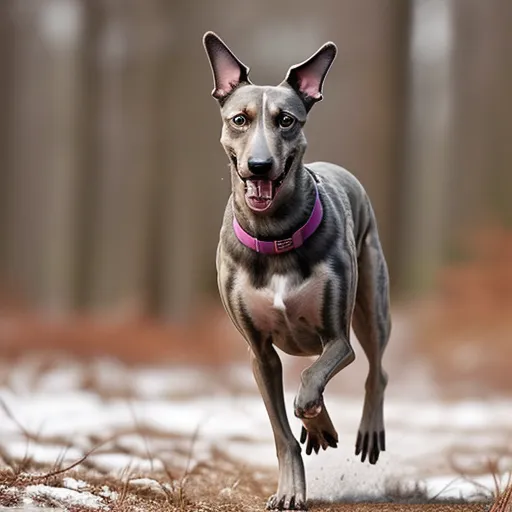
Brindle hunting dog breeds
Brindle coats can come in many different hunting breeds, each with their own special talents. From tracking small game such as rabbits to assisting with larger game, hounds are versatile and reliable companions. They are often praised for their strong sense of smell, agility, and ability to cover rough terrain with ease.
In addition to their hunting skills, brindle hunting dog breeds are also known for their loyalty and intelligence. They bond closely with their owners and are eager to learn, making them great dogs for both experienced hunters and those new to the sport. Whether you are looking for an efficient hunting companion or a unique looking family pet, Brindle hunting dogs offer a perfect combination of beauty and brains.
15 Popular Brindle Hunting Dog Breeds ;
1. Plott Hound ;

Height:
Male: 20-25 inches
Female: 20-23 inches
Weight:
Male: 50-60 pounds
Female: 40-55 pounds
Color:
Brindle (black, brown, or reddish stripes), sometimes with solid black patches.
Temperament:
Friendly, loyal, courageous, and alert. Plott Hounds are known for their protective instincts and strong family bonds.
Hunting Skills:
The Plott Hound is an excellent scent hound, particularly adept at tracking larger game such as boar, bear and deer. They have incredible stamina, making them ideal for hunting for long periods of time in difficult terrain. Their loud, distinctive bark helps predators pursue them in dense forests.
Description:
The Plott Hound is a medium to large-sized hunting dog, with a muscular structure and attractive brindle coat. Their short, smooth coat and athletic frame allows them to move quickly across rough landscapes. They have long ears and a distinctive, deep bark, which aids in tracking game.
Origin and History:
The Plott Hound is the only Coonhound breed that does not trace its roots back to the English Foxhound. Instead, it comes from Germany. In the mid-18th century, Johannes Plaut immigrated to North Carolina, bringing with him five Hanoverian Hounds. These dogs were bred to hunt wild boar, And over the years, they were carefully hybridized with other local breeds to create the Plott Hound we know today. Known for their ability to track large game, they became the official state dog of North Carolina. Despite their hunting abilities, Plott Hounds are also beloved as family companions.
2. Boxer :

Height:
Male: 23-25 inches
Female: 21.5-23.5 inches
Weight:
Male: 65-80 pounds
Female: 50-65 pounds
Color:
Fawn, brindle, or white, often with white markings on the chest and paws.
Temperament:
Energetic, playful, loyal, protective and intelligent. Boxers are known for their affectionate nature towards family and alertness towards strangers.
Hunting Skills and Abilities:
Boxers have strong jaws, quick reactions, and impressive stamina. Historically, they were used for hunting larger game such as boar and deer due to their strength and agility. Today, they are commonly family companions, but their protective instincts make them good guard dogs.
Description:
Boxers are muscular, medium to large-sized dogs with square jaws and a powerful body. Their expressive faces, marked by their alert ears and wide-eyed eyes, add to their charm. Their short coat is sleek and easy to maintain, complementing their athletic physique.
Origin and History:
Boxers originated in Germany in the 19th Boxers originated in 19th century Germany, descended from the now extinct Bullenbeisser, a dog used for hunting boar and bear. Over time, Boxers were refined for a variety of tasks, including guarding and working with hunters. They became popular throughout the world due to their versatility, loyalty and loving nature towards their families.
3. Treeing Tennessee Brindle :
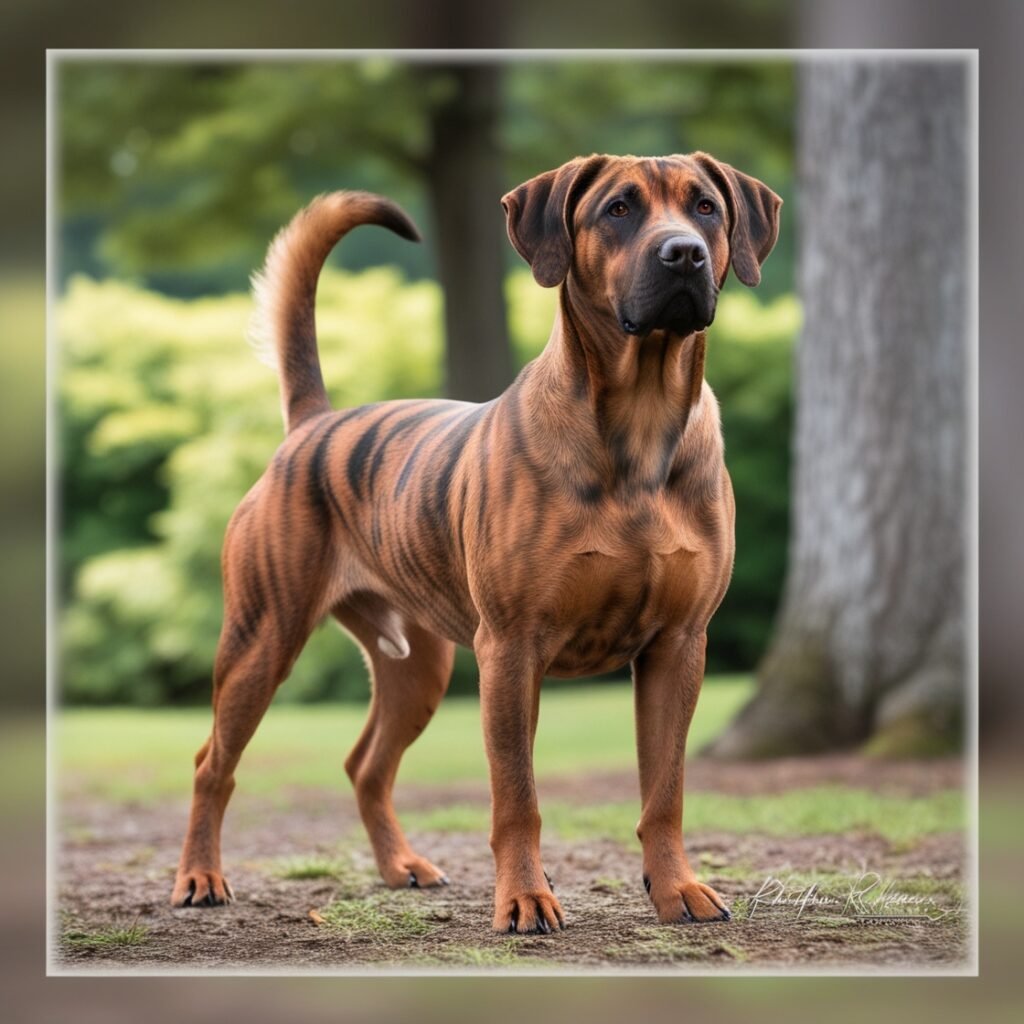
Height:
Male: 18-24 inches
Female: 16-22 inches
Weight:
Male: 30-50 pounds
Female: 25-45 pounds
Color:
Brindle or black with brindle trim.
Temperament:
Friendly, intelligent, energetic and highly focused. They are loyal dogs that have a strong desire to be happy and excel in what they do.
Hunting Skills and Abilities:
Known for its remarkable scent abilities and speed, the Treeing Tennessee Brindle excels at the game of treeing like raccoons and squirrels. Their loud, distinctive bark helps predators detect them from a distance.
Description:
A medium-sized, athletic hunting dog, the Treeing Tennessee Brindle has a sleek, muscular build and a short, smooth brindle coat. Their keen nose and agility make them excellent hunting dogs, and their friendly nature makes them great companions.
Origin and History:
The breed originated in the Southern United States, specifically Tennessee, in the 1960s. These were developed from brindle-coated dogs that were used for hunting and treeing game. Bred for his scent and tracking skills, The Treeing Tennessee Brindle is a versatile hunting companion that remains popular today for treeing small game.
4. Dutch Shepherd :

Height:
Male: 22-24.5 inches
Female: 21-24 inches
Weight:
Male: 50-70 pounds
Female: 45-65 pounds
Color:
Brindle in shades of gold or silver.
Temperament:
Intelligent, loyal, alert and independent. Dutch Shepherds are highly trainable, known for their work ethic and versatility.
Hunting Skills and Abilities:
Although primarily used for herding, the Dutch Shepherd has strong tracking and smelling abilities. Their agility and intelligence also enable them to hunt small game, and they excel in roles such as search and rescue.
Description:
Dutch Shepherds are medium-sized, muscular dogs with smooth, shiny coats. Their erect ears, sharp eyes and athletic build reflect their high energy and alertness. They are extremely versatile and can serve in a variety of roles from herding to protection and even hunting.
Origin and History:
The Dutch Shepherd originated in the Netherlands in the 19th century as herding dogs. They were bred to manage sheep and cattle, but soon became appreciated for their versatility in other tasks including hunting and guarding. Today, he is known for his intelligence, making them great working dogs and loyal companions.
5. Mountain Cur :

Height:
Male: 18-26 inches
Female: 16-24 inches
Weight:
Male: 45-60 pounds
Female: 40-55 pounds
Color:
Brindle, black, blue, red, or yellow, often with white markings.
Temperament:
Brave, energetic, protective and loyal. Mountain Curs are highly intelligent and have a strong work ethic, making them excellent hunting and family dogs.
Hunting Skills and Abilities:
Mountain Curs are exceptional hunting dogs, known for their treeing ability, especially for raccoons and squirrels. They are skilled at tracking larger game such as boar and bear, and their endurance and agility make them well suited for rough terrain. Their strong prey drive and sense of smell give them an edge in hunting.
Description:
A muscular and strong breed, the Mountain Curve is built for stamina and strength. Their short, dense coat allows them to easily navigate through dense forests and rugged landscapes. They have a keen sense of smell and a loud barking ability, which is essential for tracking and treeing game.
Origin and History:
The Mountain Cur is a true American breed, developed by early European settlers in the Appalachian Mountains. These dogs were essential for hunting, herding livestock, and protecting homes. Domesticated because of their abilities to hunt and plant trees, they became a major part of rural life. Even today, especially in the southern United States, they are valued as hunting companions.
6. American Staffordshire Terrier :

Height:
Male: 18-19 inches
Female: 17-18 inches
Weight:
Male: 55-70 pounds
Female: 40-55 pounds
Color:
Solid, bi-color, or tri-color in various shades, including brindle, fawn, black, and blue.
Temperament:
Confident, loyal, courageous and affectionate. American Staffordshire Terriers are known for their strong bond with their family and protective nature.
Hunting Skills and Abilities:
While not traditionally a hunting breed, American Staffordshire Terriers have a strong hunting drive and determination. Their strength and agility may enable them to hunt small game, although they are more commonly used for protection and companionship.
Description:
A muscular and stocky dog, the American Staffordshire Terrier has a broad head, strong jaw and powerful body. Their short coat is easy to care for, and their energetic personality requires plenty of exercise and mental stimulation. Despite their tough appearance, they are affectionate towards their families.
Origin and History:
The breed originated in the United States in the 19th century, descended from bull and terrier breeds brought from England. Originally bred for agricultural work and later for companionship, the American Staffordshire Terrier became a symbol of loyalty and bravery. Over time, they developed a reputation as beloved family dogs, although their history also includes use in activities requiring strength and stamina.
7. Greyhound :
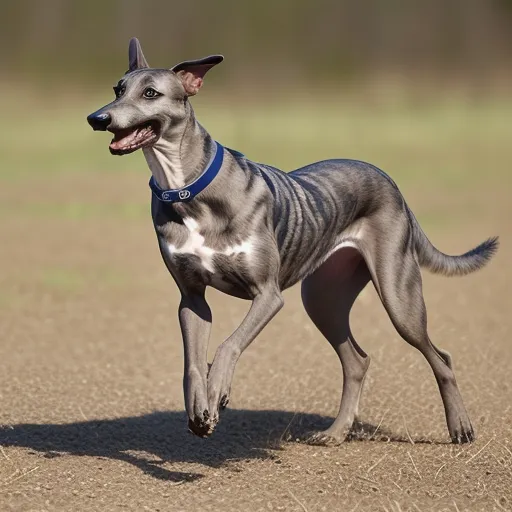
Height:
Male: 28-30 inches
Female: 27-28 inches
Weight:
Male: 65-85 pounds
Female: 55-70 pounds
Color:
Various colors, including black, white, fawn, brindle, blue, and red, often with white markings.
Temperament:
Gentle, calm, affectionate and independent. Greyhounds remain calm indoors but have bursts of energy when running. They are known for being loyal and easygoing companions.
Hunting Skills and Abilities:
Greyhounds are built for speed and are known as one of the fastest dog breeds, capable of reaching speeds of up to 45 mph. Historically, they were used by sight rather than scent when hunting game such as deer and rabbit. Their keen eyesight and running ability make them excellent chase dogs.
Description:
Greyhounds are tall, slender dogs with lean, muscular bodies and long legs. Their deep chest and slim waist give them a streamlined look, which is ideal for running at a fast pace. Despite his athletic stature, he is often referred to as a “couch potato” due to his calm and quiet nature at home.
Origin and History:
Greyhounds have an ancient history, dating back over 4,000 years to Egypt, where they were prized for hunting. They later became popular for play in Europe, especially among nobles and royalty. Today, greyhounds are known for their racing ability and as gentle, affectionate pets, often adopted after they are retired from the racetrack.
8. Whippet :
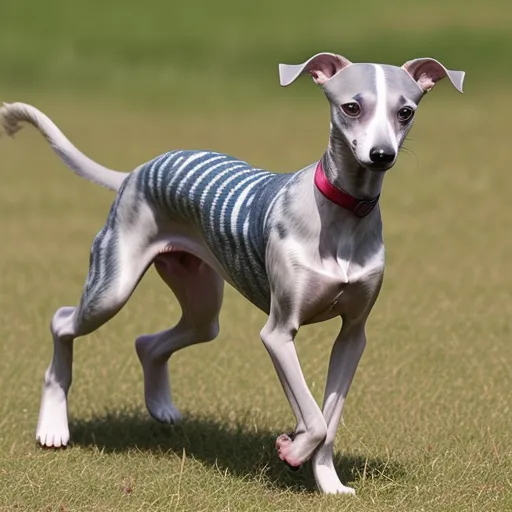
Height:
Male: 19-22 inches
Female: 18-21 inches
Weight:
Male: 25-40 pounds
Female: 20-35 pounds
Color:
Wide variety, including brindle, black, fawn, white, blue, red, and combinations of these.
Temperament:
Gentle, affectionate, calm and playful. Whippets are friendly and enjoy fun with their family, but they also have bursts of energy, especially when running.
Hunting Skills and Abilities:
Whippets are excellent sighthounds, known for their speed and agility. They can reach speeds of up to 35 miles per hour, making them adept at chasing small game such as rabbits. Their keen vision and quick reflexes make them natural hunters.
Description:
Whippets are smooth, medium-sized dogs with slim, graceful bodies. Their deep chest and narrow waist, along with their long legs, allow them to run at fast speeds. Despite their athletic abilities, they are often calm and relaxed at home, giving them a reputation as calm companions.
Origin and History:
Whippets originated in England during the 19th century, bred from small greyhound and terrier breeds. They were originally used by working-class people for rabbit hunting and racing, earning them the nickname “poor man’s racehorse”. Over time, Whippets gained popularity as both racing dogs and beloved pets due to their affectionate nature and agility. Today, he is appreciated for his combination of speed and gentleness.
9. Great Dane :

Height:
Male: 30-34 inches
Female: 28-32 inches
Weight:
Male: 140-175 pounds
Female: 110-140 pounds
Color:
Black, blue, brindle, fawn, harlequin (white with black patches), mantle (black with white markings).
Temperament:
Gentle, affectionate, patient and friendly. Great Danes are known as “gentle giants” because of their sweet nature and calm demeanor, especially with children.
Hunting Skills and Abilities:
Historically, Great Danes were used to hunt large game such as boar due to their size, strength, and bravery. While modern Great Danes are mostly companion dogs, their imposing presence and courage make them capable protectors.
Description:
The Great Dane is a massive breed with a long, muscular body and regal appearance. Despite their huge size, they are graceful and elegant in walking. Their short, smooth coat highlights their impressive physique, and their calm temperament makes them excellent family pets.
Origin and History:
The Great Dane originated over 400 years ago in Germany, where they were bred to hunt wild boar. Their large size, strength, and courage made them ideal for defeating larger game. Over time, they transformed from hunters to elite companions of royalty. Today, Great Danes are admired for their majestic appearance and kind, easy-going nature, making them popular family pets around the world.
10. American Pit Bull Terrier :

Height:
Male: 18-21 inches
Female: 17-20 inches
Weight:
Male: 35-65 pounds
Female: 30-50 pounds
Color:
Various colors, including brindle, black, blue, fawn, red, and white, often in solid or mixed patterns.
Temperament:
Confident, loyal, loving and intelligent. American Pit Bull Terriers are known for their strong bonds with their families and their friendly, playful nature.
Hunting Skills and Abilities:
Historically, Pit Bulls were used as bull-baiting and versatile working dogs. Today, their strength, agility and drive enable them to hunt small to medium-sized game. They are highly trainable and excel in various dog sports and activities.
Description:
The American Pit Bull Terrier is a muscular, medium-sized dog with a powerful build and energetic personality. They have a short, smooth coat and a broad head with strong jaws. Despite their tough appearance, they are known for their gentle and loving nature with people.
Origin and History:
Originating in the UK in the 19th century, the American Pit Bull Terrier was initially bred for bull-baiting and later as a versatile working dog. They were brought to the United States by immigrants and used in a variety of roles, including agricultural work and security. Over time, they became known for their loyalty and intelligence, gaining popularity as family pets and working dogs.
12. Bullmastiff :
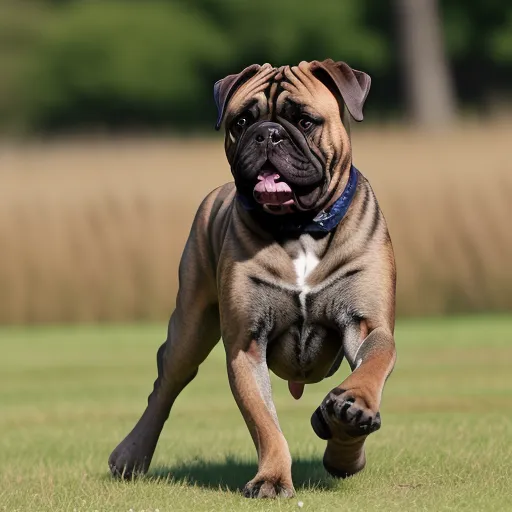
Height:
Male: 25-27 inches
Female: 24-26 inches
Weight:
Male: 110-130 pounds
Female: 100-120 pounds
Color:
Brindle, fawn, or red, often with black masks.
Temperament:
Calm, confident, protective and loyal. Bullmastiffs are known for their gentle nature with family members and their alertness as guard dogs.
Hunting Skills and Abilities:
Originally bred to guard property and detect poachers, the Bullmastiff has natural instincts for protection and tracking. Their strength and keen senses enable them to hunt larger prey, although today they are more commonly used for guarding.
Description:
The Bullmastiff is a large, powerful dog with a broad head, muscular body and short coat. They have a strong, imposing presence but are generally quiet and reserved. Their strong bodies and gentle behavior make them both effective guard dogs and lovable companions.
Origin and History:
The Bullmastiff originated in 19th century England, being a cross between the Bulldog and the Mastiff. They were developed to protect large properties from predators and were appreciated for their strength and stealth. Over time, they became known for their protective nature and loyalty, and evolved into popular family pets and trusted guard dogs.
13. Cairn Terrier :
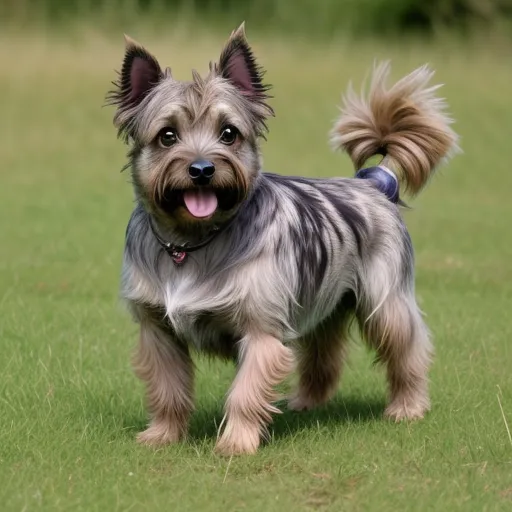
Height:
Male: 10-12 inches
Female: 9-11 inches
Weight:
Male: 13-17 pounds
Female: 13-17 pounds
Color:
Various colors including brindle, black, gray, cream, and wheaten.
Temperament:
Lively, alert, friendly and intelligent. Cairn Terriers are known for their energetic personalities and strong bonds with their families.
Hunting Skills and Abilities:
Originally bred to hunt rodents and small animals such as foxes, Cairn Terriers have a keen sense of smell and strong determination. Their digging instincts and tenacity make them effective hunters, although today they are often kept as lively, attractive pets.
Description:
Cairn Terriers are small, sturdy dogs with a rugged, weather-resistant coat. Their distinctive, expressive faces and lively demeanor make them charming pets. They have a strong, muscular structure and a distinctive, bushy coat that adds to their character.
Origin and History:
The Cairn Terrier originated in Scotland, where they were used to hunt insects in rugged highland areas. Their name comes from the word “cairn”, which refers to a pile of stones where they would often dig for hunting. Developed from early terrier breeds, Cairn Terriers have a long history as hard-working hunters and are now appreciated as lively and affectionate companions.
14. Labrador Retriever :
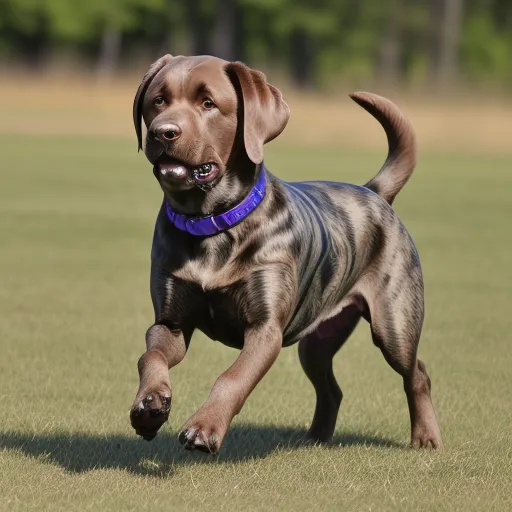
Height:
Male: 22.5-24.5 inches
Female: 21.5-23.5 inches
Weight:
Male: 65-80 pounds
Female: 55-70 pounds
Color:
Black, yellow (ranging from pale cream to fox red), or chocolate.
Temperament:
Friendly, sociable, intelligent and eager to please. Labrador Retrievers are known for their gentle temperament and are great with families, children, and other pets.
Hunting Skills and Abilities:
Labradors are excellent hunting dogs, especially for catching waterfowl. Their strong swimming abilities, keen nose and willingness to retrieve make them ideal for hunting and fieldwork. They are also adept in other roles such as search and rescue, assistance dog, and therapy dog.
Description:
Labrador Retrievers are medium to large dogs with strong, athletic physiques. They have a dense, water-resistant coat, a distinctive “beaver” tail, and a friendly expression. Their energetic and playful nature makes them popular as both working dogs and family pets.
Origin and History:
Originating in Canada, the Labrador was initially used by fishermen to retrieve fishing nets and help catch fish. They were brought to England in the 19th century, where they were refined for hunting and field trials. Today, they are one of the most popular dog breeds around the world due to their versatility, friendly nature, and trainability.
15. Staffordshire Bull Terrier :

Height:
Male: 14-16 inches
Female: 13-15 inches
Weight:
Male: 28-38 pounds
Female: 24-34 pounds
Color:
Various colors including brindle, black, blue, red, white, and combinations of these.
Temperament:
Confident, courageous, affectionate and friendly. Staffordshire Bull Terriers are known for their strong bonds with families and their playful, loving nature.
Hunting Skills and Abilities:
Historically, Staffordshire Bull Terriers were used as bull-baiting and versatile working dogs. While not commonly used for hunting today, their strength and agility can make them effective for tracking and retrieving small game.
Description:
The Staffordshire Bull Terrier is a medium-sized dog with a muscular, compact build. They have a broad head, strong jaws and a short, smooth coat. Their powerful physiques and energetic personalities make them both attractive and lively companions.
Origin and History:
Originating in England, the Staffordshire Bull Terrier was developed in the 19th century by crossing Bulldogs with Terriers. Initially bred for bull-fodder, they later became popular for their versatility and loving nature. Today, they are bred as family pets and are known for their loyalty and playful nature.
Characteristics of Brindle Hunting Dogs ;
Brindle hunting dog breeds are recognized not only for their attractive coat patterns but also for their impressive hunting abilities. The brindle coat, featuring a mix of dark and light stripes, provides natural camouflage in a variety of outdoor environments, making these dogs excellent at blending into their surroundings while tracking prey.
One of the key characteristics of brindle hounds is their agility and stamina. Breeds such as the Plott Hound and the Treeing Tennessee Brindle are known for their endurance during long hunts as well as their ability to easily navigate rough terrain. Many brindle hunting dog breeds are sighthounds or scent hounds, relying on their keen vision or keen sense of smell to locate and pursue prey.
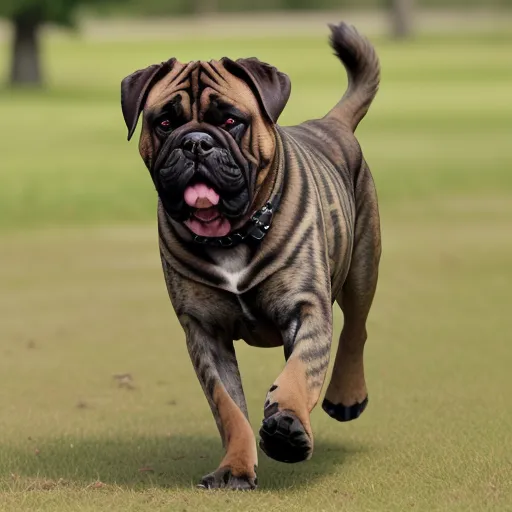
In addition to their hunting skills, these dogs are known for their loyalty and intelligence. Brindle hunting dogs form strong bonds with their owners, making them not only reliable hunters but also affectionate companions. Their strong work ethic, coupled with their natural instincts, make them highly trainable and adaptable to a variety of hunting situations, from small game to larger animals. These characteristics make brindle hunting dog breeds a favorite among hunters and families.
Training Brindle Hunting Dogs ;
Training brindle hunting dog breeds requires a balance of patience, consistency, and an understanding of their unique traits. These dogs are known for their intelligence, strong work ethic, and natural hunting instincts, making them both keen learners and driven hunters. However, their independent nature can sometimes present challenges during training, especially when it comes to obedience and recall.
The first step in training brindle hunting dogs is to establish a strong foundation of basic commands like “sit,” “stay,” and “come.” Positive reinforcement works best, as these dogs respond well to praise and treats. It is important to start training early, as their natural instincts can be shaped and refined from an early age.
Given their exceptional sense of smell and keen vision, scent and vision-based exercises are ideal for brindle hunting dog breeds. Activities like tracking or retrieving can help hone their hunting skills and keep them mentally stimulated. Socialization is also important to ensure they are comfortable in different environments and with other animals.
Brindle Hunting Dogs: Ideal Game and Terrain ;
Brindle hunting dog breeds are versatile hunters, excelling in a variety of terrain and game hunting scenarios. Their natural agility and stamina make them suitable for a wide variety of environments, from dense forests to open fields. These dogs are known for their sharp tracking abilities, whether following a scent or relying on their keen vision.
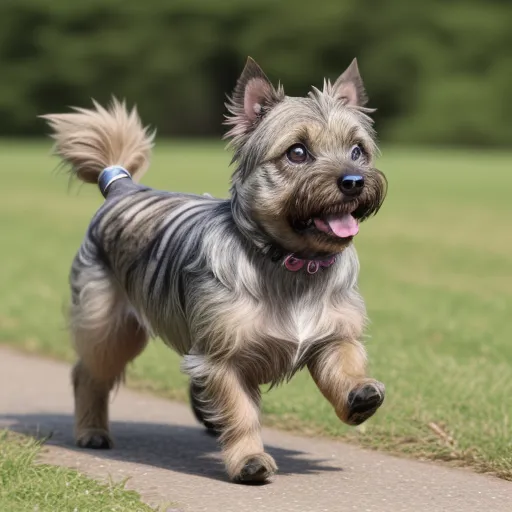
Many brindle hunting dogs, such as the Plott Hound and the Treeing Tennessee Brindle, are excellent for hunting larger game such as wild boar, deer or bear. Their strong build and fearless nature allow them to navigate difficult, rugged terrain while remaining focused on their prey. In contrast, smaller brindle breeds, such as the Whippet, are more suited to chasing small game such as rabbits, hares and birds in open areas, where their speed can be fully utilized.
The brindle coat of these dogs provides natural camouflage, helping them blend seamlessly into woodland or grassy environments. Whether in dense forests, mountain ranges, or wide plains, brindle hunting dog breeds are adaptable and able to deal with a wide variety of hunting situations. Their combination of stamina, intelligence and instinct makes them ideal for hunting both small and large game in a variety of landscapes.
Caring for a Brindle Hunting Dog ;
Caring for brindle hunting dog breeds involves understanding their unique needs as both hunters and companions. These dogs are known for their high energy and strong work ethic, so regular exercise is a must. Daily walking, running or playing in open spaces will keep them physically fit and mentally stimulated. Engaging them in activities like fetch, tracking or agility exercises will help satisfy their natural hunting instincts.
Brindle hunting dogs often have short coats that require minimal grooming. Weekly brushing will help keep their coat healthy and remove loose hair. Since these dogs are generally active outdoors, it is important to check for any signs of ticks, fleas or injuries during playtime or after hunting.
Their intelligence makes training an ongoing part of their care. Positive reinforcement techniques will help maintain their focus and obedience. Socializing brindle hunting dog breeds from a young age is also key to ensuring they are well-behaved around other animals and people.
These dogs adore attention and form strong bonds with their owners, so regular interaction is important. With proper care, brindle hounds make loyal, healthy and happy companions.
Why Choose a Brindle Hunting Dog?
Choosing brindle hunting dog breeds offers both beauty and functionality in a loyal companion. These dogs are known for their unique brindle coat, which has striking stripes of dark and light colors, making them visually distinct while providing natural camouflage in outdoor environments. But it’s not just about looks – brindle hunting dogs are incredible workers, their combination of agility, stamina and keen senses making them excellent hunters.
One of the exceptional qualities of brindle hunting dog breeds is their versatility. Whether tracking larger prey like deer or wild boar or chasing smaller prey like rabbits, these dogs excel in a variety of terrains, from dense forests to open plains. Their intelligence and eagerness to learn make training a rewarding experience, especially for hunting and outdoor activities.
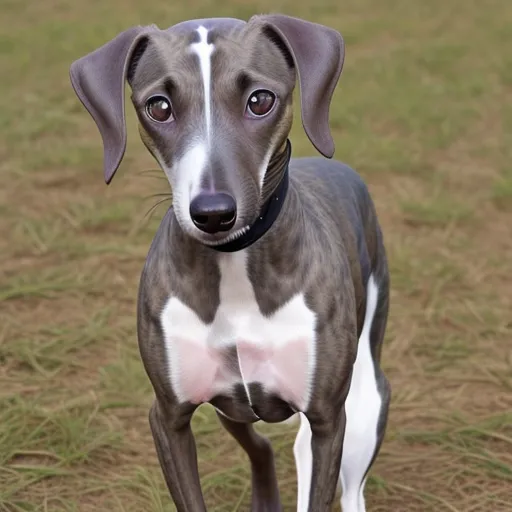
In addition to their hunting abilities, Brindle Hounds are loyal and affectionate, forming deep bonds with their families. They are protective yet gentle, making them great companions both in the field and at home. With a balance of hunting skills, loyalty, and unique appearance, brindle hunting dog breeds are an ideal choice for those looking for a skilled hunter and a lovable pet.
** Conclusion **
Ultimately, brindle hunting dog breeds offer a unique combination of beauty, skill, and loyalty that makes them an exceptional choice for hunters and families. Their attractive brindle coats not only attract attention but also provide natural camouflage, giving them an edge in various hunting areas. Whether you’re chasing small prey across open fields or tracking larger animals in dense forests, these dogs’ stamina, intelligence, and keen instincts make them excellent hunting companions.
Beyond their hunting abilities, Brindle Hounds are known for their affectionate and loyal nature. They form deep bonds with their owners and families, making them protective but gentle companions at home. Their eagerness to please and trainability ensure that they adapt well to a variety of situations, whether working in the field or playing with children in the yard.
For those looking for a hunting companion that also excels as a family pet, brindle hunting dog breeds offer the best of both worlds. With proper care, training, and attention, these dogs will not only enhance your hunting experience but also bring joy and companionship to your daily life.
You might be interested in reading this post as well hunting dog breeds short hair
“The Striking Hunters: Exploring the World of Brindle Hunting Dog Breeds” ** Introduction to Brindle Hunting Dog Breeds ** Brindle hunting dog breeds are known for their distinctive coat pattern and excellent hunting abilities. The term “brindle” refers to the unique streaks or stripes of color in their fur, which make them resemble tigers. These…
You can read this post https://tomeshnews.co.in/large-hunting-dog-breeds/?amp=1
What makes brindle hunting dog breeds unique?

Brindle hunting dog breeds are known for their distinctive coat pattern, which consists of stripes of dark and light colors. This unique appearance, combined with their agility, stamina, and sharp hunting instincts, sets them apart from other dogs.
Are brindle hunting dogs good family pets?

Yes! While they excel in hunting, brindle hunting dogs are also known for their loyalty, affectionate nature, and strong bonds with their families. They are protective and gentle, making them great companions at home.
What type of game can brindle hunting dogs track?
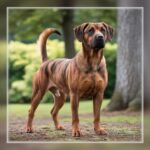
Brindle hunting dogs are versatile hunters. They can track both large game like deer or wild boar, as well as smaller game like rabbits and birds. Their keen senses and stamina make them adaptable to various hunting scenarios.
How much exercise do brindle hunting dogs need?

These dogs are highly energetic and require regular exercise. Daily walks, runs, and activities that challenge their hunting instincts, like tracking or agility training, are essential to keep them physically and mentally healthy.
Are brindle hunting dogs easy to train?

Yes, brindle hunting dogs are intelligent and eager to learn, making them relatively easy to train with positive reinforcement. Early training and socialization are important to ensure they are well-behaved and responsive.

